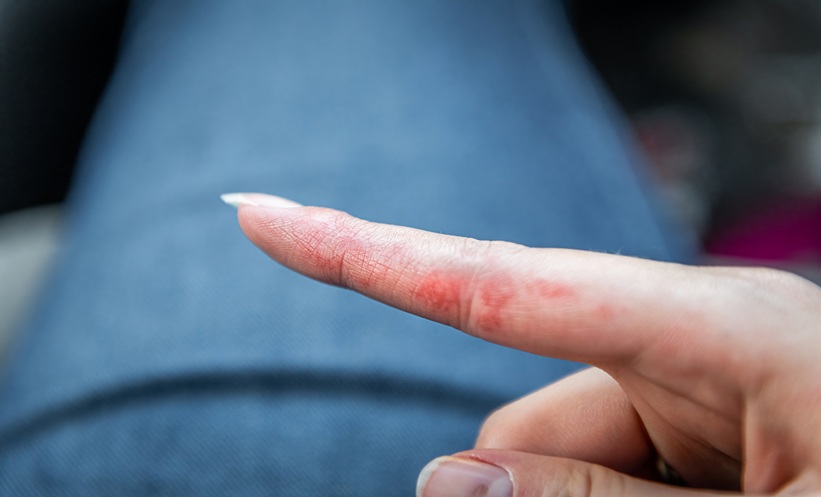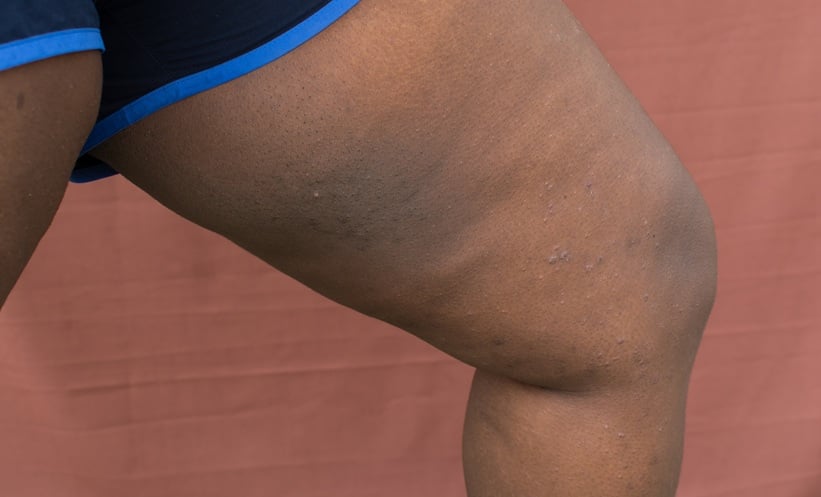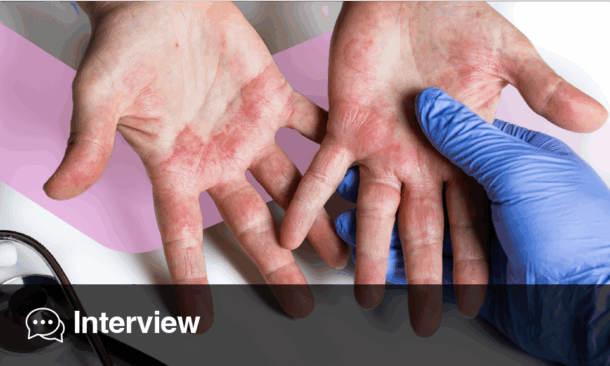BACKGROUND
Drug reaction with eosinophilia and systemic symptoms (DRESS), Stevens-Johnson syndrome (SJS), and Lyell’s syndrome are severe drug reactions with different clinical, biological, and histopathological characteristics. In order to classify cases of drug-induced severe cutaneous adverse reactions (SCARs), validation scores have been established by the RegiSCAR group. DRESS and SJS can share some features. An overlap is considered when a patient fulfills the criteria (probable or definite case) for at least two SCARS. The authors report the case of an overlapping DRESS/SJS syndrome.
CASE REPORT
A 66-year-old female patient, with a history of allergy to penicillin, presented with maculopapular rash on the face and the trunk 2 weeks after the introduction of non-steroidal anti-inflammatory drugs (NSAIDs). On physical examination, the patient had fever, facial oedema with conjunctivitis, and mucosal erosions. There were no lymph nodes. The patient was admitted to the dermatology department and NSAIDs treatment was stopped at this stage. Complete blood count revealed hypereosinophilia up to 2,500/mm3. Biochemical tests showed evidence of liver dysfunction. The laboratory routine revealed the presence of renal failure (glomerular filtration rate: 38 mL/min/1.72 m2), serum alanine aminotransferase was 210, aspartate aminotransferase was 180. Serum creatinine was 16 mg/ml. During the hospitalisation, skin detachment was observed on the back and trunk (surface: 15%) with a positive Nikolsky sign. A biopsy was performed, revealing a necrotic epidermis with necrotic keratinocytes, and rare eosinophils, compatible with SJS. Within 4 weeks, clinical symptoms and laboratory findings improved.
DISCUSSION
Only a few cases of overlapping SCARs have been reported.1,2,4 The RegiSCAR group established validation scores, using clinical, biological, and histological criteria, in order to classify cases as a definite, probable, possible, or excluded diagnosis of acute generalised exanthematous pustulosis, DRESS, or SJS/toxic epidermal necrolysis. In the authors case, DRESS syndrome was suspected because of the onset of the drug use (2 weeks), the presence of peripheral hypereosinophilia, the organ involvement, the rash extent, and the oedema of the face. However, mucosal involvement, skin detachment as well as histopathological findings would be more suggestive of SJS. The causal drug suspected was NSAIDs. This drug was indeed described as involved in a large proportion of cutaneous drug reactions and more specifically in SCARs.
In the retrospective study of Bouvresse et al., which included 216 cases of SCARs, ambiguities between the SCARs were frequent (21%), but only three cases (2.1%) were considered true overlap, based on the RegiSCAR validation scores.3 A true overlap is considered when the case of a patient can be classified as ‘probable’ or ‘definite’ for two SCARs. When SCAR is suspected, it is important to use strict diagnostic criteria to present a precise diagnosis. This is crucial because of the differences in terms of treatment, follow-up, and short- or long-term prognoses that characterise the different SCARs.







